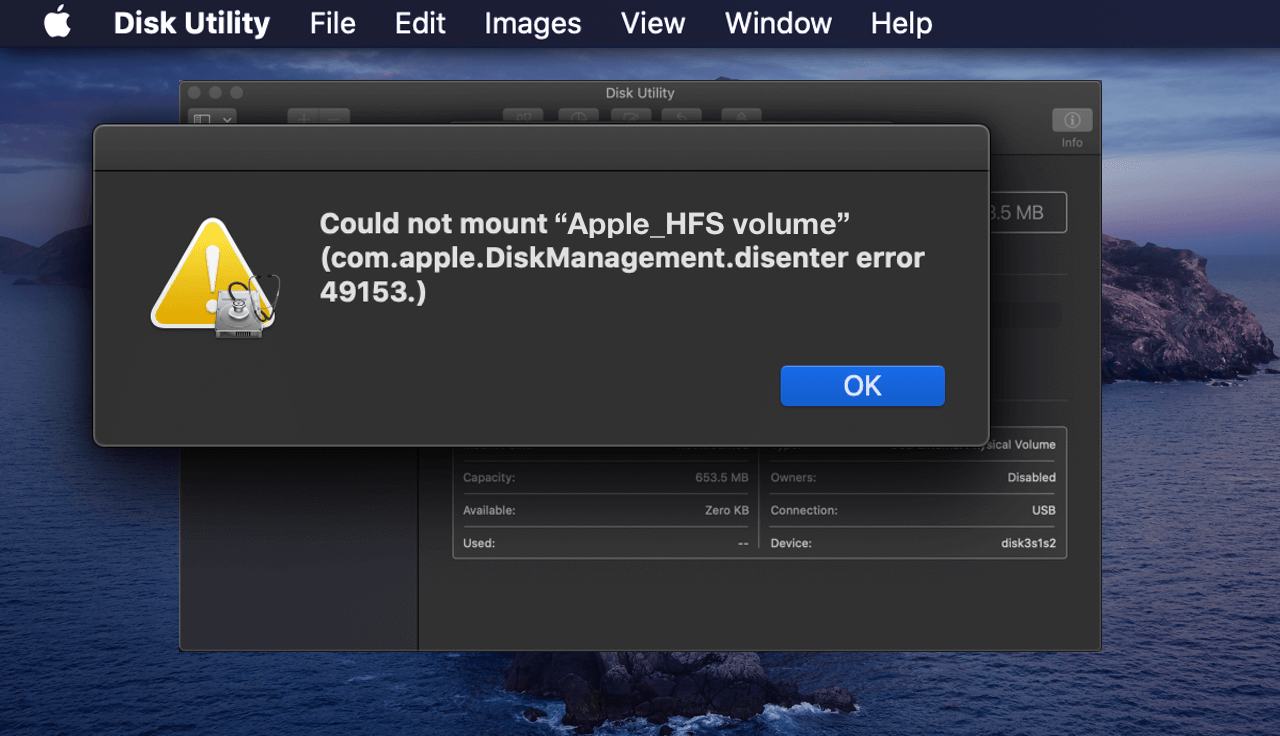

- Mac diskutility file system check exit code is 8 for mac#
- Mac diskutility file system check exit code is 8 install#
- Mac diskutility file system check exit code is 8 download#

Type lsthen Return (you type Return after every command). Type cd ~/Documentsthen and press Return to navigate to your Home folder. So, for example, to move a file from one folder to another on your Mac, you’d use the "move" command mv and then type the location of the file you want to move, including the file name and the location where you want to move it to. To run a command, you just type it at the cursor and hit Return to execute.Įvery command comprises three elements: the command itself, an argument that tells the command what resource it should operate on, and an option that modifies the output. But before we do that, it’s worth spending a little time getting to know how commands work. The quickest way to get to know Terminal and understand how it works is to start using it. The app collects data like CPU load, disk activity, network usage, and more - all of which are accessible from your menu bar.
Mac diskutility file system check exit code is 8 for mac#
Basically, a third-party Terminal for Mac that acts like Finder.įor Mac monitoring features, try iStat Menus. MacPilot allows getting access to over 1,200 macOS features without memorizing any commands. If Terminal feels complicated or you have issues with the setup, let us tell you right away that there are alternatives. If you don’t like the black text on a white background, go to the Shell menu, choose New Window and select from the options in the list. If you want to make the window bigger, click on the bottom right corner and drag it outwards. Bash stands for "Bourne again shell." There are a number of different shells that can run Unix commands, and on the Mac, Bash is the one used by Terminal. In the title bar are your username, the word "bash," and the window's dimensions in pixels. You’ll see a small window with a white background open on your desktop. To open it, either open your Applications folder, then open Utilities and double-click on Terminal, or press Command-space to launch Spotlight and type "Terminal," then double-click the search result. The Terminal app is in the Utilities folder in Applications. In that case it is likely that the spinning disk or SSD needs to be replaced.Curated Mac apps that keep your Mac’s performance under control. If it turns out it is a physical error of some sort then after formatting the volume you will either get an error that it could not be formatted or running disk repair on it will still return errors.


Launch Disk utility first and (as above) format the MacHD volume before proceeding with the OS install.įormatting a volume (assuming it is not a hard (or physical) error) will usually wipe out most common volume corruption/damage errors, making it OK to reinstall whatever was on it to begin with. Once that is done you can proceed with installing macOS and restoring your files and Apps. Do so, select the MacHD volume (or whatever it is called) and format it.
Mac diskutility file system check exit code is 8 install#
If you do it that way, boot from the thumb drive and once you get to the install screen you should have a menu option to launch Disk Utility.
Mac diskutility file system check exit code is 8 download#
If at all possible it could be a bit faster to create a macOS install thumb drive so you don't have to wait on Recovery Mode to download the OS as it installs. This does happen from time to time and is the reason things like Diskwarrior exist.Īssuming you don't have access to a third-party disk repair tool (Diskwarrior, etc.) and you do not have High Sierra (disk repair tools don't work on APFS disks yet) then you can reformat your MacHD volume and reinstall from scratch. So it sounds like you have a disk error of some sort that Disk utility can't fix.


 0 kommentar(er)
0 kommentar(er)
